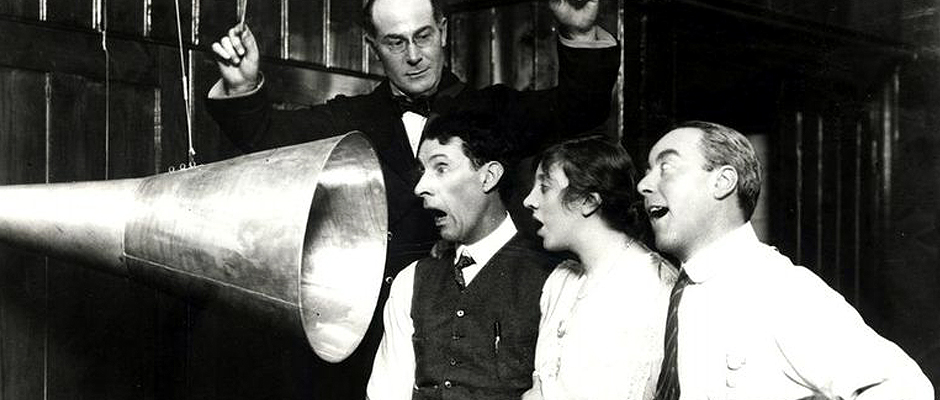How the 1920s roared and soared
The 1920s – for people in Western societies at least – were a truly remarkable time.
Not for nothing have they been given the wonderfully evocative and thoroughly accurate moniker of the ‘Roaring Twenties’. The pace of change in so many areas was nothing short of astonishing.
Coming so soon after the horrors of the Great War (World War 1) and the Great Influenza Epidemic (as our Iberian readers will know, this brutal global pandemic had absolutely nothing to do with them and yet in many places it is STILL referred to as ‘Spanish’), such a turnaround may seem surprising. Yet turnaround things most certainly did.
This was the decade when wonder technologies like cars, telephones, radio, movies, all manner of home appliances and many many more, went mainstream.
Fashion ditched formality and became joyful and accessible. People famous for being good at things like music or sport or just genetically blessed to appear handsome or beautiful on the silver screen became an entirely new breed of their own, the ‘celebrity’.
In a growing number of countries women were even being allowed to vote! Heady stuff indeed. How those prim and proper Victorians would have been scandalised if they’d been there.
Thankfully they weren’t. The people who were grabbed this unprecedented moment with both hands. They wanted to have fun. Who doesn’t? But they wanted more. They wanted, needed, to dance. To dance like they’d never danced before. To dance to the host of new and exciting music being created and recorded for their pleasure.
EMI was too young to have played any part in this remarkable decade. But the two companies that would merge to become EMI in 1931, The Gramophone Company and Columbia Phonograph, were not just there in the 20s but right at the heart of things, roaring away with the best of them.
The Gramophone Company was then part-owned by and was the British licensee of the largest record company in the US, Victor. The most dynamic music by far driving the culture at this time was of course jazz which was born and shaped in America.
The 1920s were the start of the ‘Jazz Age’ and Victor, and therefore by association, The Gramophone Company, was in the right business in the right place at the right time.
The Gramophone Company’s first jazz release came in 1919 on its HMV label by the first band to enjoy commercial success with jazz, the Original Dixieland Jazz Band (or Original Dixieland Jass Band as they were at first).
Arguably this all-white band was not the best start to cataloguing this new musical phenomenon which had emerged from and was still dominated by African American musicians. This was an issue that would not go away throughout the decade (see our story on how the UK messed up the jazz age here) and indeed we are still grappling with today.
By far the most popular records in the 20s were from the multitude of dance bands and ‘orchestras’ that were springing up all over the place. The Gramophone Company had on its books the likes of the Savoy Orpheans led by the equally extravagantly named William Debroy Somers, the Savoy Havana Band and Bert Ambrose’s various musical incarnations. They may be largely forgotten today but at the time they were huge. It definitely wasn’t rave culture that first got the British masses dancing.
Over at Columbia, the other pre-cursor to EMI, the label too was riding the dance band wave that was sweeping all before it. Their top names included bands led by Billy Cotton, Fletcher Henderson and Guy Lombardo, as well as Jack Payne and the BBC Dance Orchestra, Bert Ralton and His Havana Band and many many more.
When Britain started to dance like it had never danced before, this was the kind of music it was dancing too.
However Columbia didn’t stop there. Now in control of its former American parent company, Colombia Phonograph, the business bought the New York-based Okeh record label which had built up a substantial catalogue of American jazz, blues and dance musicians. This made Columbia the worldwide home for artists such as Louis Armstrong, Lonnie Johnsone, King Oliver, Turner Layton, the Dorsey Brothers, Mamie Smith and many others.
On the technology side the 1920s also saw the greatest leap forward since the invention of sound recording in the first place – electrical recording. At the start of the decade records were still made the same way they had been since those Victorian times, by people with loud voices and musicians playing loud instruments (trumpets, pianos, banjos for example) very loudly into an acoustic horn.

By the time the decade came to an end, the process had been revolutionised by the introduction of technology powered by electricity. It had been a long time coming, but for recording it was a technological leap on a par with movies going from silent to talkies, or black and white to colour. How it came about is a fascinating story in its own right, one deserving of its own telling. So that’s exactly what we’ve done.
